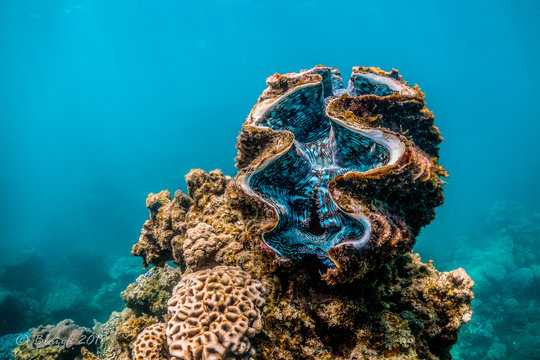Giant Clams

About Giant Clams
-
- Giant Clams are regarded as the largest Mollusks.
- Mollusks are an important phylum of invertebrate animals, having a soft body, no spine, and are often covered with a shell.
- Giant Clams are regarded as the largest Mollusks.
- A phylum is a grouping of related organisms on the basis of their fundamental characteristics.
-
- The primary habitat of giant clams is on coral reefs, found in the South Pacific and Indian oceans.
- Giant Clams share a symbiotic relationship with Algae.
- A symbiotic relationship is a type of mutualistic relationship between two organisms that benefit from each other.
- Giant clams are filter feeders, taking in plankton through a large, central opening.
- The algae inside Clams also produces metabolic waste products, which serve as a second nutritional source. This allows the clams to grow even in nutrient-lacking waters.
Threats
- The adductor muscle of the giant clam is actually considered a delicacy making them threatened.
- Overharvesting of the species for food, shells, and trade is threatening its survival.
- With coral bleaching events, the natural habitats for Giant Clams are affected.
- Coastal urbanization and increased sedimentation is affecting the population of Giant Clams.
Conservation Status
- IUCN Red List : Vulnerable
Why in News ?
- The Philippines accused Chinese fishermen of causing damage to giant clams in disputed Scarborough Shoal.
Scarborough Shoal
- It is a disputed territory in the South China Sea, claimed by the Philippines and China.
Sources
Subscribe
Login
0 Comments
